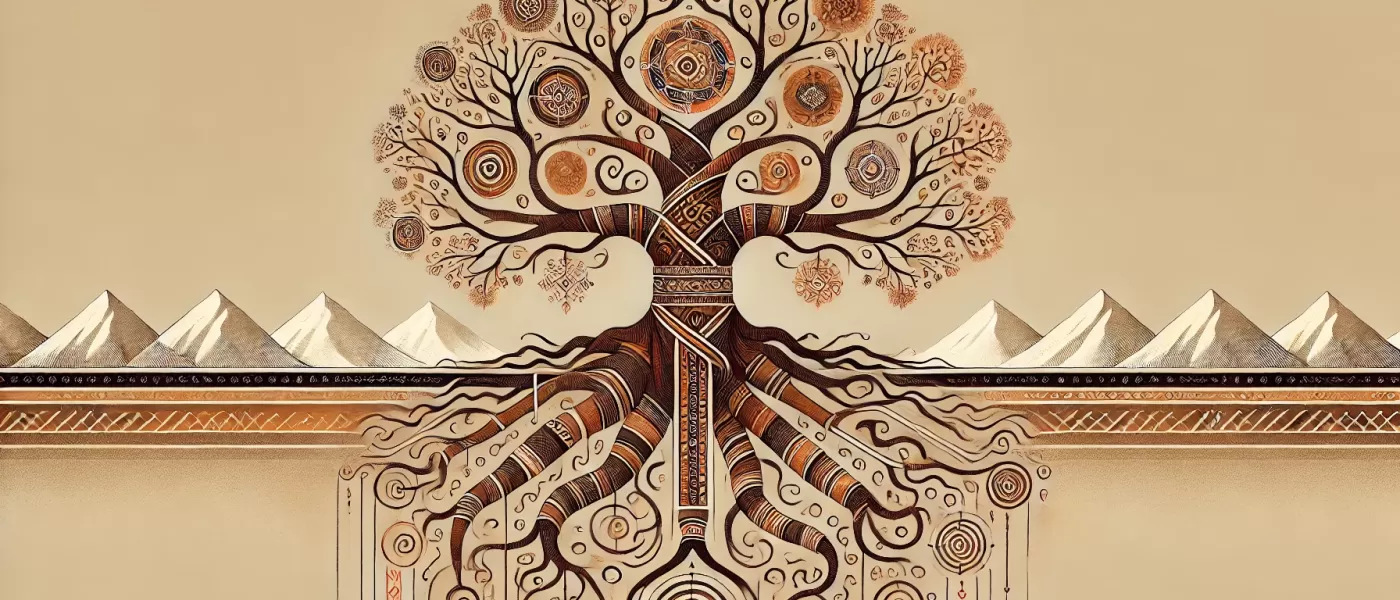A few weeks ago, I was reading Claude Lévi‑Strauss’ The Elementary Structures of Kinship, where he argues that the incest taboo is a structural necessity that drives exogamy. This, he believes, has persuaded individuals to marry outside their immediate family or clan. Using few words, he explains that customs of cross-cousin marriage too, are examples of elementary structures, and that such marriage rules maintain predictable alliances across generations.
Having long been witness to the prevalence of endogamous marriages in the Himalayas, and saddened by the fact that such practice has endured, I sit down to write this post based on my observations and opinion that may seem anti-traditional, but are, at the very least, forward-looking.
The indigenous peoples of the Himalayas have traditionally maintained a fiercely tribal social framework, and while these cultural norms were once widely accepted, they continue to persist even in the 21st century. Exceptions exist, but in many rural areas, they are still frowned upon.
Endogamy, marrying exclusively within one’s own social or cultural group, is sometimes taken even further in certain societies, with practices like consanguineous or cross-cousin marriages. With the advent of Hinduism and its influence on the region, this practice became further engrained, as the strict caste system merged easily with existing tribal divisions within Nepalese Himalayan society.
However, there are some practical reasons attached to this custom. People often choose endogamous marriages because it helps preserve close social ties. Marrying within one’s own group also protects a shared sense of identity. While traditional societies feel more at ease with partners who understand their family values and traditions, much as food habits, others stress that it ensures that property and inheritance remain within the same group or community.
Nepal’s 2021 census shows that only about 2-3% of household heads nationwide and around 1.6% in the Mountain region are married to someone from a different caste or ethnic group. The data is not comprehensive but it still indicates that exogamous marriage remains infrequent in many Himalayan communities.
Among Himalayan tribes, the practice of endogamy, was a pragmatic choice in the past. But we sometimes do not pay as much attention to the converse, to the significant challenges it could pose in the future. One of the biggest challenges that persists, therefore, is the lack of genetic diversity, which may become detrimental to the long-term health and adaptability of human populations.
When people marry strictly within the same group for many generations, the chances of sharing recessive genetic traits increase, which raises the risk of hereditary disorders. This means that it is likely to reduce overall health resilience, subsequently making communities vulnerable to diseases and environmental pressures. Over time, these genetic bottlenecks could make an impact on the community’s ability to adapt with the changing needs of the modern world.
Strict endogamy carries its own social burdens. As groups narrow and ideas become more rigid rather than organic, living within an integrated and connected framework might become challenging. In many communities, individuals, particularly women, feel the weight of expectation to choose partners only from within their own circle, which quietly limits personal freedom and choice. Demographic pressures too, might increase as smaller groups encounter an even sharper strain due to the gradual shrinking of the numbers of potential partners.
Moreover, when communities stay isolated for long periods, cognitive abilities could be adversely affected. This is not about labeling anyone as less intelligent, but about recognizing that genetic variety often supports wider variation in human abilities.
Limited exposure to diverse customs, languages, values, and the gradual loss of cultural tolerance, now makes it particularly necessary to approach these problems with more urgency. This has the potential to create irreversible division among populations. Over time, it could create a rigid social mindset that resists new ideas and struggles to adapt to changing circumstances.
It should be understood that the clan-based system in the Himalayas wasn’t devoid of exceptions. The classification of clans into sub-clans, a system widely prominent, results from a history of occasional exogamous marriages. Evidence such as the Khambu Pacha system and the clan structures across various Himalayan tribes suggests that exogamy was practiced, at least in part.
Additionally, traditions like bride capture and elopement point to this practice, as such customs typically arose when couples married outside the strict bounds of their tribal system. Recognizing the existence of exogamy does not mean opening a Pandora’s box; it is clear that such practices were already present within our societies, even if only on a limited scale.
Nature favors diversity, and exogamy reflects that principle. Throughout history, human populations have evolved and thrived precisely through intermingling across groups. Many communities owe their resilience and vitality to this mixing. Yet, even among those who profess nature worship, we have often forgotten this fundamental rule: survival and growth depend on interaction, exchange, and the blending of people. Evolution, both biological and cultural, requires that we step beyond rigid boundaries and embrace the diversity that sustains us.
By this, I am not advocating cultural dilution. Culture and tradition can survive only if the people find an environment to thrive. When we look beyond ourselves and engage with other traditions and cultures, we come to understand our own, with more focus. We learn to appreciate both nature’s abundance and the health it provides, and we evolve. This does not mean that we must abandon our roots, but without this openness, our culture risks becoming like a glass menagerie. We may look beautiful, but we would still be confined and fragile.
Finally, we must evaluate the role that women play in sustaining culture. As the primary educators of children who teach language and values, women are truly the custodians of tribal memory. When women are empowered to interact beyond rigid boundaries, they can aid their communities to adapt while also preserving the essence of tradition. In this way, embracing measured exogamy and openness is not a threat to culture. It should be viewed as a pathway to ensure that both people and tradition continue to flourish together.
Perhaps the survival of Himalayan cultures depends less on rigid rules and more on knowing when to loosen them, without, of course, losing your hat. Endogamy has preserved identity for centuries, but exogamy reminds us that growth and resilience often arrive uninvited, usually with a stranger at the doorstep. Our traditions do not vanish when we peek beyond our own circles and they gain depth, like a favorite recipe improved with a pinch of something new. Women carry language, traditions, values, and memory, and quietly guide generations. They are ones who ensuring that the culture survives with a openness and grace.
In conclusion, this is like a delicate balance between preservation and openness, the familiar and the foreign, where the true strength of a people, and the enduring life of their culture lies. Therefore, we must consider to change the tribal mindset and perhaps loosen our rigidity. This is imperative to strengthen our communities by embracing a modest level of exogamous marriage to create a space for new knowledge and perspectives to flow in. This balanced openness can help us remain resilient and adaptable as we face the challenges of the 21st century and beyond.





Leave a Reply